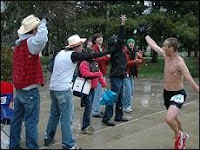Notre Dame Students like a lot of things. They like things that are related to their religion and how they are always using Catholicism to guide their actions (even if just for the sake of appearing to be more Catholic than they really are). They like things that pertain to their academic plight and how they firmly believe that Notre Dame is one of the most prestigious schools in the world (and how each of them is personally the smartest and most clever person one could ever meet). They like things that have to do with their dorms and the crazy things that happen when a random collection of individuals is brought together to create a long-lasting community. Notre Dame Students like things that are related to drinking and how, no matter how hard they work, they still know how to party hard. And they like football. Notre Dame Students like their football and the tradition-filled Saturdays that made the school what it is today. Most of all, and this might seem a bit obvious, but they like what happens when all of these things come together: they like Notre Dame.
Notre Dame Students like the feeling they get when they walk to class across South Quad on a sunny day, when the shining Golden Dome catches their eye. They like the feeling they get when they’re driving back to campus after a break and see that billboard for The Bookstore on I-80 coming from Chicago, and know they are almost there. They like the feeling they get when they’re recognized as a Notre Dame Student because they’re wearing a monogrammed hat in a bar far from campus. They love how it feels when they’re standing in a crowd of their peers, trying to enter the Notre Dame Stadium before kickoff and yelling at the top of their lungs:
Goooooooooooo IRISH, Beeeeeeeeeeeat TROJANS!!
Goooooooooooo IRISH, Beeeeeeeeeeeat TROJANS!!
Goooooooooooo IRISH, Beeeeeeeeeeeat TROJANS!!
Goooooooooooo IRISH, Beeeeeeeeeeeat TROJANS!!
Notre Dame Students like all of these things and more, but most of all they like knowing that of all the colleges they could have chosen at which to spend their four years, they came to a place with a tradition of excellence where the past meets the present, and the future isn’t too far behind. They love the fact that they wound up at a place that truly is unique, where every day presents an opportunity for them to be a part of something special, and they love the fact that of all the students that still dream of going there, they were chosen by the University to make Notre Dame their home.


+Getting+Indignant.bmp)



+dorm+room+configurations.bmp)





+Fist+Pumps.bmp)





